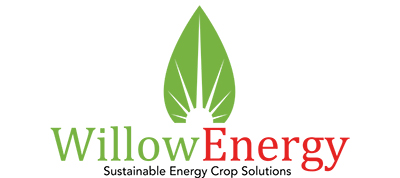Fast Growing Willow Varieties For Biomass Energy Production
Short Rotation Coppice (SRC) willow varieties
If you or your client wish to invest in a SRC willow plantation as a new income stream, then choosing the correct variety of short rotation coppice willow is important. You will need to consider the land on which your willow will be grown, desired yield and required maintenance, amongst other elements.
At Willow Energy, we currently provide eight varieties of shrub willow that have been carefully selected for commercial growing and harvesting. We work carefully with Rothamsted Research, custodians of the UK National Willow Collection, to develop an increasing number of elite willow varieties.
All of our plants are shrub willow varieties optimised for UK conditions. They are fast-growing and offer the best possible
Our available willow shrub species are:
- Roth Hambleton (EU 45560) - Bred in 2006, this variety produces excellent yields and high-diameter tall stems.
- Roth Cheviot (EU 38326) - Bred in 2004, this variety has attractive dark red stems and produces constantly good biomass yields.
- Roth Mourne (EU 45561) - Bred in 2006, this variety contains Salix triandra within its complex pedigree, introducing useful diversity to your mixture.
After a free consultation and an assessment of your situation and land, we will provide you with advice on the best willow shrubs for you. For us, honesty and integrity are critically important in establishing this industry. We only offer bespoke advice and will inform you if none of our available varieties are viable in your location.
Development of new willow shrub varieties
Along with Rothamsted Research, we are constantly working to develop new willow varieties for biomass. They have a number of new varieties currently in their development pipeline that will soon be available for purchase.
We are in a long-standing partnership with the SRC willow breeding programme at Rothamsted Research and are licenced to sell their SRC willow varieties. The scientists there use their unique germplasm collection to underpin their breeding and research programmes. Each new variety has been through four rounds of selection within their breeding programme. As part of this, varieties are assessed at multiple field locations and analysed to find those with characteristics for a range of end uses.
While our primary work is with SRC willow plantations, we are also heavily involved in research. Willow varieties are being investigated for uses as varied as medicine and chemical synthesis.
Willows, the Salix family, are uniquely capable of providing a low-carbon energy source for a number of reasons:
- willow shrubs for wet areas will grow on land unsuitable for arable crops or animal grazing
- fast growth provides high yields of wood for chipping with minimal input: mostly rain and very little in the way of fertilisers or chemicals
- a longer growing season than typical crops and less wastage due to the harvesting of all visible wood
- high energy savings and reduced GHG emissions from reduced transport needs
- plantations are in the ground for multiple growth and harvesting cycles
- the root mass sequesters carbon in the soil long term
- wider biodiversity benefits than annual crops
Rothamsted Research uses a vast array of scientific techniques to aid the selection of their willow varieties. From genetic studies and advanced DNA reading, technology scientists are identifying the genes that influence growth, disease, pest resistance and drought response. Their research aims to accelerate the breeding of willow for bioenergy, biofuels, and bio-based products for the growing bioeconomy.
Maximising the environmental benefits of willow growing
Most of the UK’s willow cuttings currently come from Denmark and Sweden. While using willow chips as biomass fuel certainly has a lot of environmental benefits, those benefits are reduced by the carbon footprint created in transporting planting material from abroad.
At Willow Energy, we are committed to making the best possible use of UK-bred and grown willow and seeing the highest positive environmental impact from it. That’s why our work includes multiplication of willow varieties within the UK. By increasing the number of available willow whips for planting, we reduce reliance on international imports. This has benefits both for the supply chain and for the environment as a whole.
All the time these willow varieties are growing, their root mass is growing too. This fixes a surprising tonnage of carbon within the soil. In perennial crops such as SRC willow, the root mass stays in the soil when the visible shrubbery is harvested. With each successive growth cycle, that root mass and its stored carbon increases.
Additionally, because the willow chips are burned in a biomass boiler, much of the captured carbon dioxide is currently returned to the atmosphere. To close this gap in the sustainability of willow biomass for energy, technology is being developed to implement carbon capture and storage (CCS). This will help to make willow, an already sustainable fuel, contribute to negative emissions.
Rothamsted Research’s willow collection comprises of 1,500 accessions. Ongoing research and curation since 1923 has produced a number of biomass varieties. We are proud to have been tasked with multiplying these new and valuable varieties.



